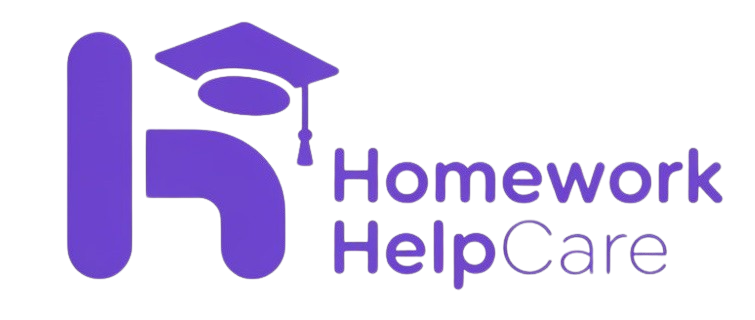Blog
Homework Help for Parents: Understanding New Teaching Methods
Are you struggling to help your child with school homework that looks nothing like what you learned in school? You’re not alone. Modern teaching methods have transformed education, leaving many parents feeling bewildered when attempting to assist their children. This guide will help you understand these new approaches and provide practical strategies to support your child’s learning journey.
Why Teaching Methods Have Changed
Today’s education focuses on preparing students for a rapidly changing world that demands critical thinking, collaboration, and adaptability—skills not emphasized in traditional education models.
From Memorization to Understanding
Traditional education often relied heavily on memorization and repetition. Modern approaches aim to develop deeper conceptual understanding and application of knowledge.
| Traditional Approach | Modern Approach |
|---|---|
| Teacher-centered lectures | Student-centered exploration |
| Emphasis on memorization | Focus on understanding concepts |
| Standardized testing priority | Multiple assessment methods |
| Textbook-centered learning | Multimedia and resource variety |
| Individual work predominates | Collaborative learning emphasis |
| Fixed classroom arrangement | Flexible learning environments |
As Dr. Linda Darling-Hammond, President of the Learning Policy Institute, explains: “The goal is not just to fill students with facts, but to help them develop the skills to use knowledge in new situations and to manage their own learning effectively.”
Common Core Math: Why It Looks Different
One of the most significant changes parents encounter is in mathematics instruction. Common Core standards introduced in 2010 emphasize multiple strategies for solving problems rather than focusing solely on the standard algorithm many parents learned.
Understanding the Purpose
The aim of modern math instruction is to build number sense and mathematical reasoning—not just getting the right answer, but understanding why that answer makes sense.
Example: Multiple Ways to Solve 27 × 35
Traditional Method:
27
× 35
----
135 (5 × 27)
810 (30 × 27)
----
945
Common Core Approaches Might Include:
Breaking apart numbers:
(20 × 30) + (20 × 5) + (7 × 30) + (7 × 5) =
600 + 100 + 210 + 35 = 945
Area model:
30 5
+--------+----+
20| 600 | 100|
+--------+----+
7| 210 | 35|
+--------+----+
= 945
Professor Jo Boaler of Stanford University, a mathematics education expert, notes: “When we teach students to work with numbers flexibly, they develop critical brain pathways that are necessary for higher mathematics.”
Language Arts Innovations
Balanced Literacy Approach
Modern reading instruction typically uses a balanced literacy approach combining phonics instruction with whole language techniques.
Elements of balanced literacy:
- Read Alouds – Teachers model fluent reading
- Shared Reading – Students and teachers read together
- Guided Reading – Small group instruction at students’ levels
- Independent Reading – Students practice with “just right” books
- Word Study – Focused work on phonics and vocabulary
Writing Workshop Model
Many schools now use a workshop approach to writing instruction, focusing on the writing process rather than just the final product.
Key components:
- Mini-lessons on specific writing skills
- Independent writing time
- Conferencing with teacher
- Peer editing sessions
- Publishing celebrations
Project-Based Learning
Project-based learning (PBL) integrates multiple subjects through extended projects addressing real-world challenges. This approach can seem unstructured to parents accustomed to worksheet-based homework.
PBL Elements You Might See in Homework
- Open-ended questions requiring research
- Long-term assignments with multiple components
- Student choice in demonstrating learning
- Reflection questions about the learning process
- Real-world applications of classroom content
Research from the Buck Institute for Education shows that high-quality PBL increases student engagement and improves content retention compared to traditional instruction.
Technology Integration in Modern Classrooms
Today’s students use technology as a creation tool, not just for consumption or practice.
Common Educational Technology Applications
| Technology Type | Educational Purpose | Examples You Might See |
|---|---|---|
| Learning Management Systems | Organizing assignments and resources | Google Classroom, Canvas, Schoology |
| Interactive presentation tools | Student engagement and assessment | Nearpod, Pear Deck, Kahoot |
| Creation tools | Demonstrating understanding through media | Book Creator, Canva, iMovie |
| Coding platforms | Developing computational thinking | Scratch, Code.org, Tynker |
| Virtual reality | Immersive learning experiences | Google Expeditions, Merge Cube |
Educational technologist Monica Burns recommends: “When helping with technology-based assignments, ask your child to explain the purpose behind the technology use rather than focusing on the tool itself.”
Standards-Based Grading
Many schools have moved away from traditional letter grades toward standards-based grading, which evaluates students on specific skills and knowledge rather than overall percentages.
Understanding the Levels
While systems vary, most use a 4-point scale similar to this:
| Level | What It Means | Traditional Equivalent |
|---|---|---|
| 4 | Exceeding standard/Advanced understanding | A |
| 3 | Meeting standard/Proficient | B |
| 2 | Approaching standard/Developing | C |
| 1 | Beginning progress toward standard | D |
| 0 | No evidence of understanding | F |
This approach provides more detailed information about student progress on specific skills rather than averaging all performance into one grade.
How Parents Can Effectively Support Learning
Creating a Productive Homework Environment
- Designated space – Create a consistent, well-supplied area for homework
- Minimize distractions – Consider what your child needs to focus effectively
- Visible schedule – Post expectations and break work into manageable chunks
- Brain breaks – Encourage movement breaks between school assignments
- Accessible resources – Keep common supplies and references available
Communication Strategies with Teachers
When you’re confused about an assignment or teaching method:
- Ask your child to explain their understanding first
- Check the class website or learning management system
- Email specific questions to the teacher
- Request examples or demonstrations if needed
- Consider a brief conference if confusion persists
Elementary teacher Maria Rodriguez suggests: “The best question to ask your child’s teacher is ‘Can you show me how you’re teaching this concept in class?’ This helps you align your support with classroom methods.”
Guiding Without Over-Helping
One of the biggest challenges for parents is providing the right amount of support without doing the work for their children.
Productive Struggle is an important part of learning. When your child is stuck:
- Ask questions rather than giving answers: “What strategies have you tried?”
- Encourage perseverance: “This is challenging, but I’ve seen you work through difficult problems before.”
- Suggest a short break if frustration builds
- Validate effort: “I notice how much thought you’re putting into this.”
Supporting Children with Learning Differences
Modern teaching methods can benefit diverse learners through their flexibility and multiple approaches, but parents may need additional strategies.
Working with Accommodations
If your child has an IEP or 504 plan:
- Understand how accommodations apply to homework
- Maintain consistent communication with special education staff
- Advocate for clarity on modified expectations
- Use similar language and prompts as used in school
Educational psychologist Dr. Thomas Armstrong notes: “The modern classroom’s emphasis on multiple ways of demonstrating knowledge aligns perfectly with the neurodiversity movement’s recognition that there are many ways to learn.”
Social-Emotional Learning in Academic Contexts
Many schools now integrate social-emotional learning (SEL) into academic subjects. This approach develops:
- Self-awareness
- Self-management
- Social awareness
- Relationship skills
- Responsible decision-making
Supporting SEL During Homework
- Model healthy emotional regulation during challenging work
- Use growth mindset language: “You haven’t mastered this yet, but you’re making progress.”
- Celebrate effort and perseverance, not just correct answers
- Encourage reflection on the learning process
FAQs About New Teaching Methods
Modern math instruction focuses on building conceptual understanding before procedural fluency. The goal is for students to understand why mathematical processes work, not just how to get the right answer through memorized steps. This approach leads to stronger problem-solving abilities in the long run
Before introducing alternative methods, try to understand the purpose behind the current teaching approach. Contact your child’s teacher to better understand the instructional goals. If you do share alternative strategies, present them as “another way” rather than “the right way.”
This standards-based grading system evaluates specific skills rather than overall performance. A “3” typically means meeting grade-level expectations, while “4” indicates exceeding them. This approach provides more detailed feedback about your child’s strengths and areas for growth.
Ask your child to explain what they understand about the assignment and the strategies they’ve learned in class. If they can’t explain it clearly, use the school’s online resources or contact the teacher for clarification rather than teaching methods that might conflict with classroom instruction.

